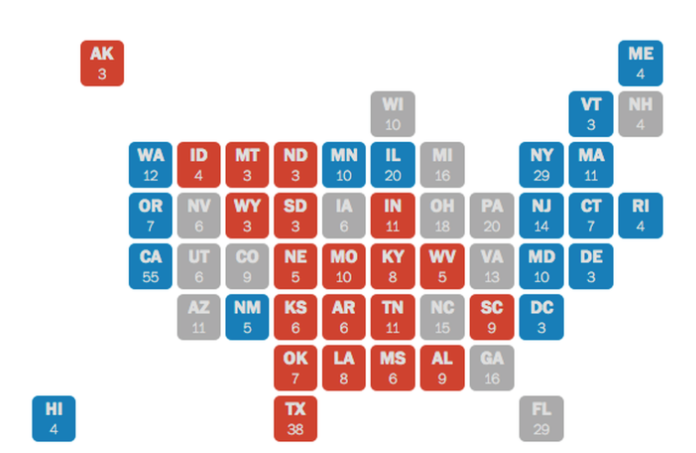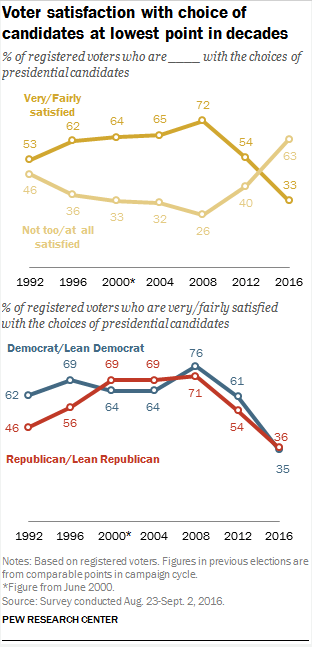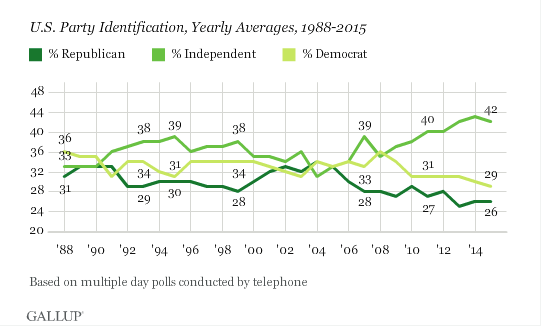Headed into the presidential debate on Sept. 26, the data gurus over at FiveThirtyEight found that more than double the number of voters in the 2012 election at this point are undecided as to who they’ll cast a vote for, making election predictions a risky business to be in.
There are many reasons for such a large number of voters remaining undecided, but the biggest is that neither candidate seems capable of increasing their favorability ratings.
A focus group documented by Time magazine after the debate found that Donald Trump may have hurt himself with his rambling, emotive answers — but that Hillary Clinton didn’t necessarily help herself any. “I like competency and a track record of success,” a man in the group said. Asked if he hadn’t seen it in the debates, he said, “Not in one person!”
That about sums it up — two historically disliked candidates, and the majority can’t seem to agree upon who is less evil than who.
What’s at stake
In 14 key states where polling is tight, third-party and undecided voters make up between 12-22% of the voters — and they will get to decide who gets the electoral votes. The two candidates must prove they have a firm grasp on issues of collective importance in states with radically different makeup, from Nevada to the Rust Belt to Florida.
Underscoring the pair’s ability to convey an empathy for voter concerns is, of course, their trustworthiness (as circuitous as that may be). A Gallup poll released Monday found that only a third of voters find Clinton honest and trustworthy, versus 35 percent for Trump.

According to the Washington Post, 173 electoral votes are up for grabs in key battleground states
What do mainstream voters think of the candidates?
Even voters who are affiliated with one party or the other are unhappy with their choices for the president. Indeed, 7 of 10 voters have a negative view of the candidates. This includes half of Bernie Sanders supporters who don’t think Clinton is honest. Conversely, however, the evangelical wing of Republicans have flocked to support him en masse. Third-party candidates still have close to 10 percent support nationally.

Can anyone make sense of it?
So what does this all mean? That’s the million-dollar question. Because the undecideds are such a force, it’s hard to say what will happen in November. It’s not at all unrelated that a significant increase in voters who self-identify as “Independent” can be pinpointed as a cause for headaches in the offices of pollsters nationally. Both candidates are campaigning in an effort to secure the support of these voters, and their VP picks were indicators of who they think they can manage to get support from. Since then the picture has only become more muddled, neither candidate gaining a clear advantage.

When will undecided voters next have a chance to choose?
A deeper dive into the demographics of undecided voters by POLITICO suggests that they trend younger and strongly oppose both candidates, so the candidate who more quickly appeals to the millennial generation could potentially pull ahead with a significant lead.
They will hear more from the two sides at the first VP debate on Oct. 4, while the next scheduled presidential debate is right around the corner on Oct. 9. Meanwhile, both campaigns will be criss-crossing the wider playing field of swing states this year along with their surrogates in an attempt to sway voters.
